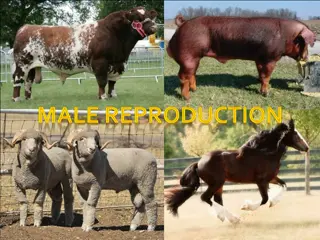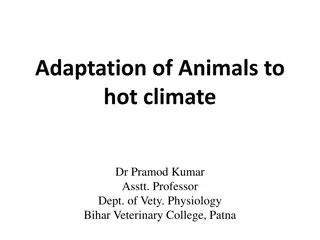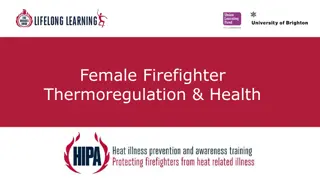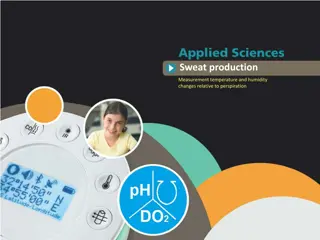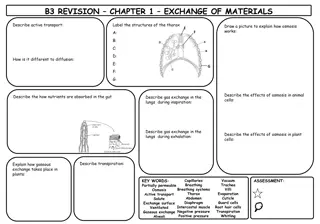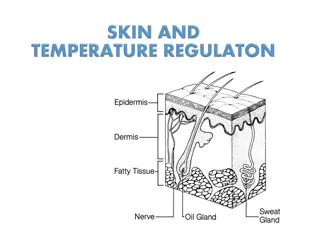Protocol: Cooling Basics, Clinical Considerations, and Phases of Care
The essentials of cooling protocols and clinical considerations, focusing on temperature management, thermoregulation basics, effects of hypothermia/cooling, central temperature measurement, and factors influencing target temperature. It emphasizes the importance of safe monitoring and application o
2 views • 72 slides
Understanding Cooling Basics and Clinical Considerations for Patient Care
This presentation delves into essential information on temperature regulation and the application of cooling in patient care. It covers topics such as thermoregulation basics, physiological effects of hypothermia, central temperature measurement, and factors influencing target temperature. The talk
2 views • 72 slides
Male Reproductive System Overview
The male reproductive system is responsible for producing and delivering fertile sperm, as well as regulating hormones like testosterone. It includes the scrotum, testes, ducts, and accessory glands. Important functions include spermatogenesis, thermoregulation, and supporting secondary sexual chara
1 views • 22 slides
Adaptation of Animals to Hot Climates - Understanding Thermal Regulation Strategies
Animals have evolved remarkable adaptations to cope with hot climates, including physiological responses such as sweating and changes in body size and limb length. Temperature stress can affect their functioning, making thermoregulation crucial. Bergmann's rule and Allen's rule explain how body size
0 views • 15 slides
Female Firefighter Thermoregulation & Health Insights
For female firefighters, thermoregulation is vital for maintaining core temperature while facing environmental challenges. Research shows females have lower heat tolerance and may require higher core temperatures to trigger sweating. Issues such as obesity, high blood pressure, strength levels, and
0 views • 27 slides
Understanding Sweat Production and Temperature Regulation
Explore the relationship between sweat production, skin temperature, and environmental humidity in maintaining our body's cooling system. Discover the physiological significance of perspiration in thermoregulation and its role in eliminating toxins. Engage in an experiment to investigate how the bod
4 views • 23 slides
A Comparative Analysis of Ectothermy vs. Endothermy in Organisms
Ectotherms regulate body temperature externally, relying on environmental heat sources, while endotherms produce heat internally. Ectotherms like reptiles and fish have advantages such as lower metabolic rates and food requirements, while endotherms like birds and mammals have higher energy needs du
0 views • 16 slides
Understanding Homeostasis in Organisms
Homeostasis is the key to maintaining internal stability in living organisms, ensuring they return to a stable state after fluctuations. This involves various body parts such as the kidneys, skin, liver, and pancreas. Different systems like body temperature regulation, blood pressure control, and os
1 views • 51 slides
Understanding the Common Integuments and Skin Anatomy
The common integuments encompass the skin, hairs, skin glands, claws, hooves, and horns, playing vital roles in protection, thermoregulation, and drug administration. The skin's structure consists of the epidermis and dermis layers, renewing continuously to maintain its functions. Additionally, nail
0 views • 11 slides
Understanding the Male Reproductive System: An Overview by Dr. Vikas Sachan
Exploring the male reproductive system anatomy, including the testes, scrotum, reproductive ducts, and accessory sex glands, highlighting the production of sperm and male sex hormones. The role of primary and secondary sex organs, such as the epididymis, vas deferens, urethra, and penis, along with
0 views • 52 slides
Biology Revision Notes on Exchange, Transport, and Homeostasis
This comprehensive biology study guide covers topics related to the exchange of materials, transporting materials in the body, and maintaining internal conditions. From describing active transport to explaining the functions of blood components, this resource provides detailed insights into osmosis,
0 views • 4 slides
Understanding Thermoregulation in Animals and Humans
Thermoregulation is the process of regulating body temperature in organisms. It can be seen in two types of animals - ectothermic and endothermic. Ectothermic animals rely on external energy sources to maintain body temperature, while endothermic animals use internal metabolic energy. The skin plays
0 views • 22 slides


